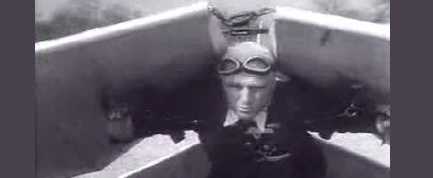The Flaws of Human Flight

Man has dreamed of flying probably for as long as he could dream.
Early attempts to get off the ground were frequently based on the flapping action of birds, and they were often hilariously flawed. Even today, after breaking the sound barrier and putting men on the moon, human flight remains a very imperfect science.
In recent years, there have been renewed attempts, notably by the military, to copy birds and insects.
The efforts to copy nature are largely doomed, says Jim Usherwood, who works out of the Royal Veterinary College in the UK and studies the differences in aerodynamics between machines and animals. The reason: birds and insects are incredibly inefficient.
Usherwood argues that machines and flying creatures generally don't work the same simply because animals must flap. Even the best military chopper and the humble bumblebee, despite similar flight patterns, have little in common in how they work.
"Animals' wings, unlike propellers, have to keep stopping and starting in order produce lift (animals have forgotten to invent propellers, just as they forgot wheels)," Usherwood explains. "Think of vigorous waving, or perhaps exuberant rattling of a cocktail shaker — this takes a fair amount of power to overcome inertia. So, the idea is that both wing shape and how wings are used can be understood better if the effort of flapping is remembered, which explains why vultures don't look like gliders.
It's also the reason "most winged creatures, from insects to pigeons, fly so inefficiently," Usherwood said.
Get the world’s most fascinating discoveries delivered straight to your inbox.
Usherwood, who has studied dragonflies and birds, is now investigating the compromise a winged creature faces between generating lift and overcoming inertia. He loads the wings of racing pigeons with lead fishing weights. All his studies reveal biology to be inneficient at flight.
"My work should act as a reminder to be cautious in copying nature," he said. "There is lots of interest in making MAVs/UAVs (micro/unmanned air vehicles) that flap, which may present all sorts of advantages in terms of maneuverability, speed and so on. However, there is a tendency to presume that biology is efficient, and I would say that, even at very small sizes, if you want to hover efficiently, be a helicopter not a flapper."
Interestingly, scientists think the origin of flight involved gliding, not flapping. In fact the triangular delta-wing shape of modern fighter jets was used by a small reptile to glide between trees 225 million years ago.
Usherwood, funded by the Wellcome Trust, will present his results July 6 at the Society for Experimental Biology's Annual Meeting in Marseille, France. He's not alone in his thinking.
"Because the nature of flapping flight is so complex, it's difficult to copy," says Sergey Shkarayev, a professor of aerospace and mechanical engineering at the University of Arizona. "People realized it's much easier to deal with fixed wings, as birds do when they soar. But you still need a propeller. Birds do not have this very important invention, like a wheel or propeller. People came up with a combination of a propeller and fixed wings. That’s how the Wright brothers succeeded."
Birds are incredibly effective, however, which is one reason engineers try to copy them. While the aerobatic A-4 Skyhawk plane has a roll rate of about 720 degrees per second, a barn swallow can roll at more than 5,000 degrees per second. A Blackbird jet can cover 32 of its own body lengths per second, but a pigeon covers 75 of its body lengths a second.
- Video: Early Aviation Failures
- Many Mysteries of Flight Remain
- How Planes Fly



